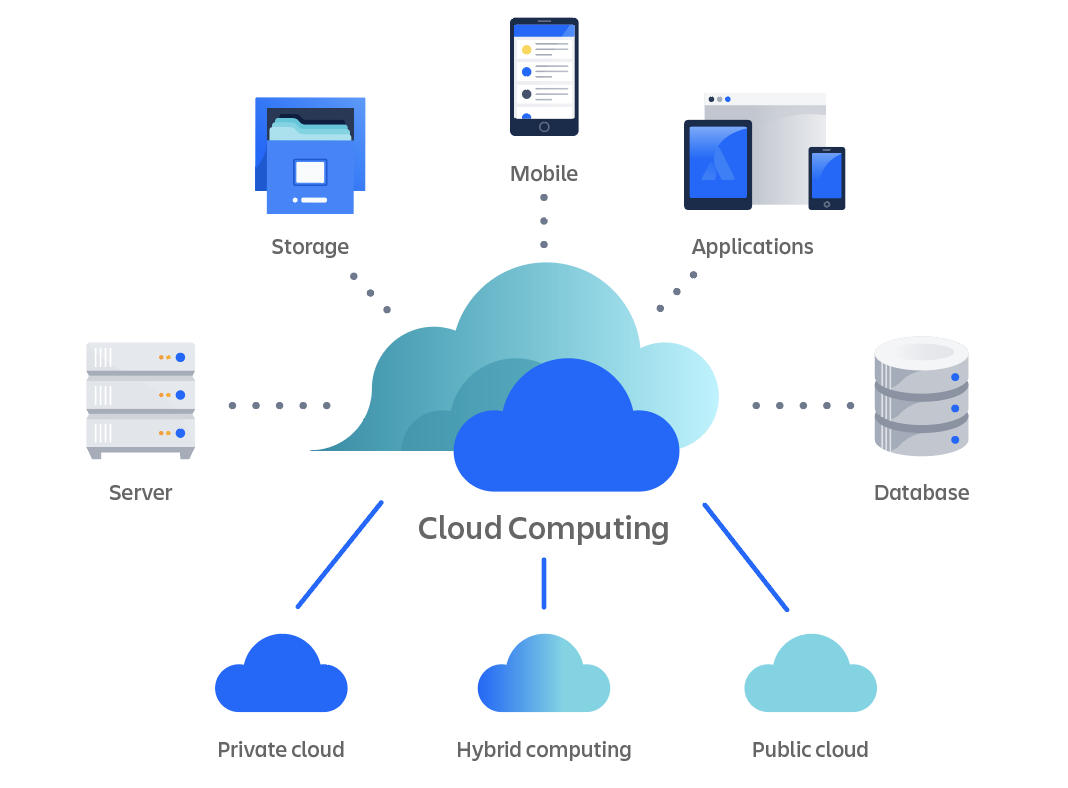Keep Updated with the Cloud Services Press Release: Trends and Growths
Keep Updated with the Cloud Services Press Release: Trends and Growths
Blog Article
Achieve Seamless Scalability With Cloud Solutions
In the ever-evolving landscape of cloud solutions, accomplishing seamless scalability stands as a foundation for contemporary companies seeking to stay versatile and competitive. The quest for seamless scalability with cloud services introduces a globe of opportunities for those prepared to embrace the transformative power of dynamic source management.
Advantages of Cloud Scalability
Cloud scalability supplies companies the versatility to dynamically adjust resources based on need, making certain optimum efficiency and price performance. One vital benefit is the capacity to range resources up or down quickly in reaction to varying workloads. This agility allows companies to fulfill changing consumer needs without over-provisioning resources, eventually causing cost financial savings. Scalability additionally boosts performance by making certain that systems can deal with raised web traffic or workload without experiencing downtime or stagnations. By efficiently allocating sources, companies can keep high degrees of performance throughout peak times without unneeded expenses during quieter durations. Additionally, cloud scalability advertises development and trial and error by enabling companies to quickly examine originalities and scale them as required. This adaptability encourages a society of continuous improvement and adaptation, making it possible for organizations to remain competitive in a rapidly advancing market landscape. Ultimately, the benefits of cloud scalability prolong beyond expense financial savings to include enhanced efficiency, agility, and advancement.
Secret Attributes for Scaling
Efficient scaling in cloud solutions relies upon essential features that enable companies to readjust sources dynamically based upon need. One vital attribute for scaling is elasticity, permitting sources to scale up or down in action to varying workloads. This makes sure that companies can satisfy efficiency requirements without over-provisioning sources. An additional crucial attribute is scalability, enabling systems to manage raised work by adding resources seamlessly. This function is crucial for fitting development without jeopardizing performance. Furthermore, automation plays an important function in scaling by automating the provisioning and de-provisioning of sources based on predefined plans. Automation decreases human treatment, boosts performance, and guarantees rapid feedback to transforming demands. Surveillance and analytics devices are likewise crucial for scaling, supplying insights right into source use, efficiency metrics, and prospective traffic jams. These tools make it possible for companies to maximize and make educated decisions resource appropriation for efficient scaling. In general, these vital features jointly equip organizations to accomplish seamless scalability in cloud services.
Implementing Auto-Scaling Techniques
To efficiently optimize resource allowance and adjust to differing workloads, companies must tactically execute auto-scaling approaches in their cloud services facilities. Auto-scaling allows systems to immediately readjust the number of calculate sources based upon real-time demand. There are various auto-scaling methods that organizations can use, such as anticipating scaling, which uses historic information to forecast future source needs, and responsive scaling, which reacts to current workload changes.

Best Practices for Scalability
For companies aiming to improve their scalability in cloud solutions, applying finest practices is crucial for optimal efficiency and resource monitoring. One key finest practice is designing applications with a microservices architecture. This strategy breaks down applications right into smaller sized, independent solutions that can be released, upgraded, and scaled independently, permitting higher adaptability and scalability.
One more vital technique is making use of containerization innovation, such as Docker or Kubernetes. Containers allow the packaging of applications and their dependencies right into separated units, making it much easier to scale components separately and release them regularly throughout different atmospheres.
Furthermore, applying automated implementation and infrastructure as code (IaC) can enhance scalability efforts (linkdaddy cloud services). Automation devices like Terraform or Ansible aid in provisioning and taking care of resources effectively, lowering hand-operated errors and allowing quick scalability
In addition, keeping track of performance metrics, establishing alerts, and conducting routine ability planning are crucial techniques to ensure positive scalability administration. By sticking to these ideal practices, companies can achieve smooth scalability in their cloud solutions while maximizing efficiency and source usage.
Surveillance Performance Metrics
When evaluating the performance of cloud services scalability, very closely monitoring performance metrics is necessary for making certain optimum performance and source allotment. By continuously tracking crucial efficiency signs (KPIs) such as response times, resource, throughput, and latency use, companies can gain useful insights into the wellness and performance of their cloud facilities. Checking efficiency metrics permits the early detection of prospective traffic jams their explanation or problems that could affect scalability, allowing proactive procedures to be required to address them before they escalate.

Verdict
To conclude, accomplishing seamless scalability with cloud services is essential for companies to enhance efficiency, improve technology, and keep high efficiency levels during peak times. By leveraging the advantages of cloud scalability, executing auto-scaling approaches, making use of key functions such as flexibility and automation, and following best practices like application design and performance monitoring, businesses can efficiently scale their systems while making best use of source usage and efficiency.
The mission for seamless scalability with cloud services introduces a world of opportunities for those ready to embrace the transformative power of vibrant source management.
Cloud scalability provides organizations the flexibility to dynamically adjust resources based on demand, ensuring optimum efficiency and price efficiency. Another crucial feature is scalability, allowing systems to handle raised workload by adding resources flawlessly.For organizations intending to boost their scalability in cloud services, executing best methods is essential for ideal efficiency and resource administration.When evaluating the effectiveness of cloud solutions scalability, very closely checking efficiency metrics is crucial for making certain optimal capability and source allotment.
Report this page